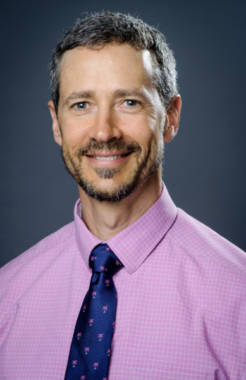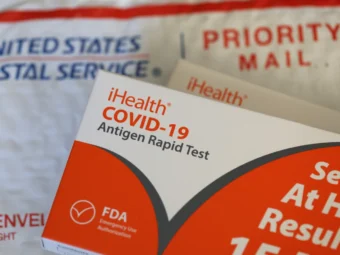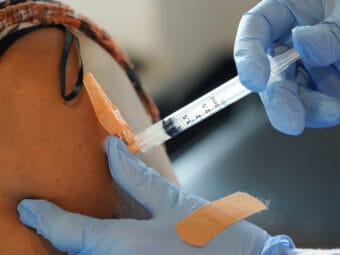
State health officials said Tuesday that a more contagious strain of COVID-19 arrived in Alaska over a month ago, but they’re hopeful the initial case is now contained.
Officials said the first case of the strain, known as B.1.1.7 and first identified in Britain, was found in a person who tested positive for COVID-19 in Anchorage in late December, after traveling to a state where the strain was already circulating.
After the positive test, additional DNA sequencing was required to identify the strain of the virus. State lab workers in Fairbanks ran into technical problems that substantially delayed results, officials said at a news conference Tuesday.
The infected person lives with someone who also tested positive for COVID-19, though officials have not yet identified that specific strain. Both have recovered.
“They reported that they remained in isolation and didn’t have contact with others during their infectious period,” Dr. Joe McLaughlin, the state epidemiologist, said at the news conference. “We’re hopeful that transmission of this variant stopped with these two individuals, but we can’t say that for sure.”
McLaughlin said the state should expect to see more cases of the B.1.1.7 strain in the “near future,” and called on Alaskans to intensify their efforts to fight the spread of the virus. Some scientists say the new strain could be 50% more contagious.
“People really need to double down on their efforts to mitigate transmission,” he said. “Always masking when you’re around people outside of your small, little bubble. Avoiding crowds. Avoiding close contact with people.”

Some two-dozen U.S. states have identified a total of 293 cases of the B.1.1.7 strain, according to the CDC. But the nation’s surveillance system for detecting it trails behind dozens of other countries, so the U.S. has a limited window into the spread of B.1.1.7 and other mutated strains.
The CDC projects B.1.1.7 will be responsible for more than half of new cases by March. Alaska officials say they’re in a race to distribute doses of the COVID-19 vaccine before the new variant takes hold.
While the vaccine works against B.1.1.7, the strain’s more contagious nature makes it harder to contain, officials said. And because more people are expected to get it, it’s expected to cause more deaths.
“The more a virus is easily transmitted from one person to another, the more work we all have to do to keep it from doing that,” Dr. Anne Zink, Alaska’s chief medical officer, said at the news conference.
The person infected with B.1.1.7, whom officials didn’t identify, received their positive test result in Anchorage on Dec. 22.
When data from the person’s positive test suggested that it could be the contagious strain, the state included it in a group of more than 300 similar specimens to be sequenced.
The process normally takes about five days. But with these particular samples, workers at the Fairbanks lab encountered what Zink described as “bad luck.”
First, the analysis failed. Then, after taking a day to reset their machine, it broke. A technician had to test negative before traveling to Fairbanks to fix it, Jayme Parker, a top official at the lab, said in an email.
Then, when they ran the batch of samples again, the machine broke a second time and state microbiologists had to be coached over the phone to fix it, Parker said.
In the meantime, other batches were successfully processed but didn’t contain the new strain, she added.
“Chalk it up to Murphy’s Law: The run that kept failing had the variant,” Parker said.
In spite of the problems with that particular batch of samples, Alaska is sequencing a much larger fraction of positive tests than the rest of the country.
Parker, at the news conference, said the state has sequenced nearly 2,000 samples, a little less than 4% of the state’s 51,800 positive COVID-19 tests. As of last month, just 0.3% of positive tests nationwide had been sequenced, according to the Washington Post.
Early on, Alaska was only able to sequence samples that had high viral loads, but in December, it started using new enrichment techniques that allowed it to process more types of specimens, Parker said.
The state is looking at boosting its sequencing capacity, possibly by working with other labs in Alaska that have the necessary technology, she added.
McLaughlin, the state epidemiologist, said that if the sequencing turnaround can be reduced to what he called “real time,” it could help public health agencies focus on cases of specific strains like B.1.1.7.
Contact tracers — public health workers who track and notify the close contacts of infected people — could prioritize those cases to keep the strains from spreading further, he said.
This story has been updated.


